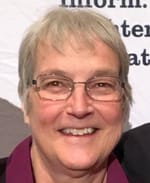As part of its ongoing Rivers at Risk project, South Dakota News Watch reached out to the two major party candidates for South Dakota governor to ask what each would do to reduce pollution and improve the quality of state waterways.
Here are statements emailed to News Watch by U.S. Rep. Kristi Noem, the Republican candidate, and her November opponent, state Sen. Billie Sutton, the Democratic candidate.
Statement from Kristi Noem:
“Water quality is extremely important for all of our citizens, but represents a tremendous challenge in many areas of the state, something your reporting has done a thorough job of exploring. As your articles have showcased, this is a massive and complex issue, meaning that addressing it will require a number of stakeholders – public and private – working together to arrive at reasonable and workable solutions.
I’ve been a farmer, rancher, and hunter my whole life, so I understand the careful balance between production and conservation. In the U.S. House, I fought to expand the sodsaver program, incentivizing the protection of native grasslands – a meaningful tool for enhancing water quality.
As governor, I have committed to expand voluntary conservation programs by improving landowner relationships. I also recognize the challenges at the Department of Environment and Natural Resources, which must enforce ever-increasing federal regulations with limited resources – all at a time when DENR has lost many experienced staff to retirement. Building upon the existing DENR workforce will be critical.
As far as the buffer strip program, I’ll continue to support it and efforts to educate producers about the importance of conservation and enrolling land in the buffer strip program.”
Statement from Billie Sutton:
“One of the primary responsibilities of a leader is to protect and preserve the great resources of our state to pass along to the next generations. In a democracy, many policies can be reversed, undone, or reprioritized, but our natural resources are one treasure that we cannot afford to misuse or destroy.
As governor, I will put together a team of experts and stakeholders to study and address this water quality problem. The fact that this issue has gone unchecked so long is another example of the culture of complacency we’ve grown accustomed to in state government.
We’ve been made to believe that we have to choose between development and preservation, but there’s room for both. I’m going to do the hard work of bringing all voices to the table to find solutions and do better for everyone impacted.”




